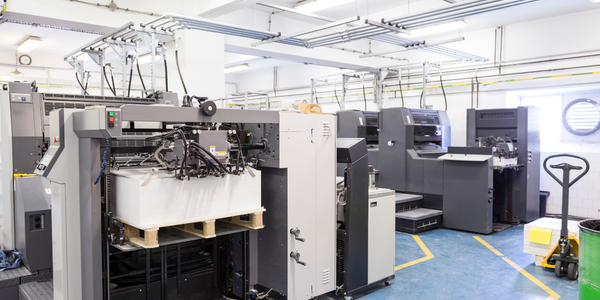
Technology Category
- Analytics & Modeling - Predictive Analytics
- Functional Applications - Enterprise Asset Management Systems (EAM)
Applicable Functions
- Maintenance
Use Cases
- Asset Lifecycle Management
- Machine Condition Monitoring
The Challenge
A recent study on maturity of Asset Efficiency from Infosys and the Institute for Industrial Management (FIR) at Aachen University revealed that 85 percent of manufacturing companies globally are aware of asset efficiency, but only 15 percent have implemented it at a systematic level. Current challenges include lack of instrumentation of the assets, missing real-time data analytics, lack of context due to missing information from other systems, and lack of a holistic focus with other aspects of efficiency like energy, utilization, operations, and serviceability.
GOAL
To collect asset information efficiently and accurately in real-time and run analytics to make the right decisions
The Solution
*This is an IIC testbed currently in progress.*
LEAD MEMBER
Infosys
SUPPORTING MEMBERS
Bosch, GE, IBM, Intel, KUKA, National Instruments, PTC
MARKET SEGMENT
High Tech, Industrial Manufacturing, Discrete and Process Manufacturing, Automotive, Aerospace, and other segments with high value fixed/moving assets
SOLUTION
Study of an asset - Failure mode analysis prediction using engineering knowledge - Mapping and modelling of the asset accordingly - Development of a platform stack for real-time data collection from the asset and overall system and data analytics
TESTBED INTRODUCTION
Many industries have assets that are critical to their business processes. Availability and efficiency of these assets directly impact service and business. Using predictive analytics, the Asset Efficiency Testbed aims to collect real-time asset information efficiently and accurately and run analytics to make the right decisions in terms of operations, maintenance, overhaul and asset replacement. Infosys, a member of the Industrial Internet Consortium, is leading this project, with contribution from Consortium members Bosch, GE, IBM, Intel, KUKA, National Instruments and PTC.
Asset Efficiency is a vertical testbed, making it possible for the testbed to be applied to multiple solutions. The testbed will launch in two phases. In the first phase, the testbed will be created for a moving solution, in this case, aircraft landing gear. The focus of this phase will be on the creation of stack and the integration of technologies. In the second phase, the testbed will address fixed assets, like chillers, with the goals of finalizing the architecture and opening up the interfaces.
The Asset Efficiency Testbed monitors, controls and optimizes the assets holistically taking into consideration operational, energy, maintenance, service, and information efficiency and enhance their performance utilization. The Asset Efficiency Testbed offers numerous benefits including: Condition Monitoring that helps in determining an optimal maintenance schedule, the reduction in downtime thus improving overall productivity of assets, reduction in capital and operational expenditures, and efficient energy utilization.
LEAD MEMBER
Infosys
SUPPORTING MEMBERS
Bosch, GE, IBM, Intel, KUKA, National Instruments, PTC
MARKET SEGMENT
High Tech, Industrial Manufacturing, Discrete and Process Manufacturing, Automotive, Aerospace, and other segments with high value fixed/moving assets
SOLUTION
Study of an asset - Failure mode analysis prediction using engineering knowledge - Mapping and modelling of the asset accordingly - Development of a platform stack for real-time data collection from the asset and overall system and data analytics
TESTBED INTRODUCTION
Many industries have assets that are critical to their business processes. Availability and efficiency of these assets directly impact service and business. Using predictive analytics, the Asset Efficiency Testbed aims to collect real-time asset information efficiently and accurately and run analytics to make the right decisions in terms of operations, maintenance, overhaul and asset replacement. Infosys, a member of the Industrial Internet Consortium, is leading this project, with contribution from Consortium members Bosch, GE, IBM, Intel, KUKA, National Instruments and PTC.
Asset Efficiency is a vertical testbed, making it possible for the testbed to be applied to multiple solutions. The testbed will launch in two phases. In the first phase, the testbed will be created for a moving solution, in this case, aircraft landing gear. The focus of this phase will be on the creation of stack and the integration of technologies. In the second phase, the testbed will address fixed assets, like chillers, with the goals of finalizing the architecture and opening up the interfaces.
The Asset Efficiency Testbed monitors, controls and optimizes the assets holistically taking into consideration operational, energy, maintenance, service, and information efficiency and enhance their performance utilization. The Asset Efficiency Testbed offers numerous benefits including: Condition Monitoring that helps in determining an optimal maintenance schedule, the reduction in downtime thus improving overall productivity of assets, reduction in capital and operational expenditures, and efficient energy utilization.

Case Study missing?
Start adding your own!
Register with your work email and create a new case study profile for your business.
Related Case Studies.

Case Study
IoT enabled Fleet Management with MindSphere
In view of growing competition, Gämmerler had a strong need to remain competitive via process optimization, reliability and gentle handling of printed products, even at highest press speeds. In addition, a digitalization initiative also included developing a key differentiation via data-driven services offers.

Case Study
Siemens Wind Power
Wind provides clean, renewable energy. The core concept is simple: wind turbines spin blades to generate power. However, today's systems are anything but simple. Modern wind turbines have blades that sweep a 120 meter circle, cost more than 1 million dollars and generate multiple megawatts of power. Each turbine may include up to 1,000 sensors and actuators – integrating strain gages, bearing monitors and power conditioning technology. The turbine can control blade speed and power generation by altering the blade pitch and power extraction. Controlling the turbine is a sophisticated job requiring many cooperating processors closing high-speed loops and implementing intelligent monitoring and optimization algorithms. But the real challenge is integrating these turbines so that they work together. A wind farm may include hundreds of turbines. They are often installed in difficult-to-access locations at sea. The farm must implement a fundamentally and truly distributed control system. Like all power systems, the goal of the farm is to match generation to load. A farm with hundreds of turbines must optimize that load by balancing the loading and generation across a wide geography. Wind, of course, is dynamic. Almost every picture of a wind farm shows a calm sea and a setting sun. But things get challenging when a storm goes through the wind farm. In a storm, the control system must decide how to take energy out of gusts to generate constant power. It must intelligently balance load across many turbines. And a critical consideration is the loading and potential damage to a half-billion-dollar installed asset. This is no environment for a slow or undependable control system. Reliability and performance are crucial.

Case Study
Integration of PLC with IoT for Bosch Rexroth
The application arises from the need to monitor and anticipate the problems of one or more machines managed by a PLC. These problems, often resulting from the accumulation over time of small discrepancies, require, when they occur, ex post technical operations maintenance.

Case Study
Refinery Saves Over $700,000 with Smart Wireless
One of the largest petroleum refineries in the world is equipped to refine various types of crude oil and manufacture various grades of fuel from motor gasoline to Aviation Turbine Fuel. Due to wear and tear, eight hydrogen valves in each refinery were leaking, and each cost $1800 per ton of hydrogen vented. The plant also had leakage on nearly 30 flare control hydrocarbon valves. The refinery wanted a continuous, online monitoring system that could catch leaks early, minimize hydrogen and hydrocarbon production losses, and improve safety for maintenance.

Case Study
A Cloud-based Machine Performance Assistant
Printing International is building pad printing machinery to print on all kinds of plastics, glass, ceramics, porcelain, on caps and closures, medical devices and pharmaceuticals. 4 Key Project Requirements: • Transparency on machine performance • Worldwide service network • Remote support, contractual availability • IT security

Case Study
Airport SCADA Systems Improve Service Levels
Modern airports are one of the busiest environments on Earth and rely on process automation equipment to ensure service operators achieve their KPIs. Increasingly airport SCADA systems are being used to control all aspects of the operation and associated facilities. This is because unplanned system downtime can cost dearly, both in terms of reduced revenues and the associated loss of customer satisfaction due to inevitable travel inconvenience and disruption.



